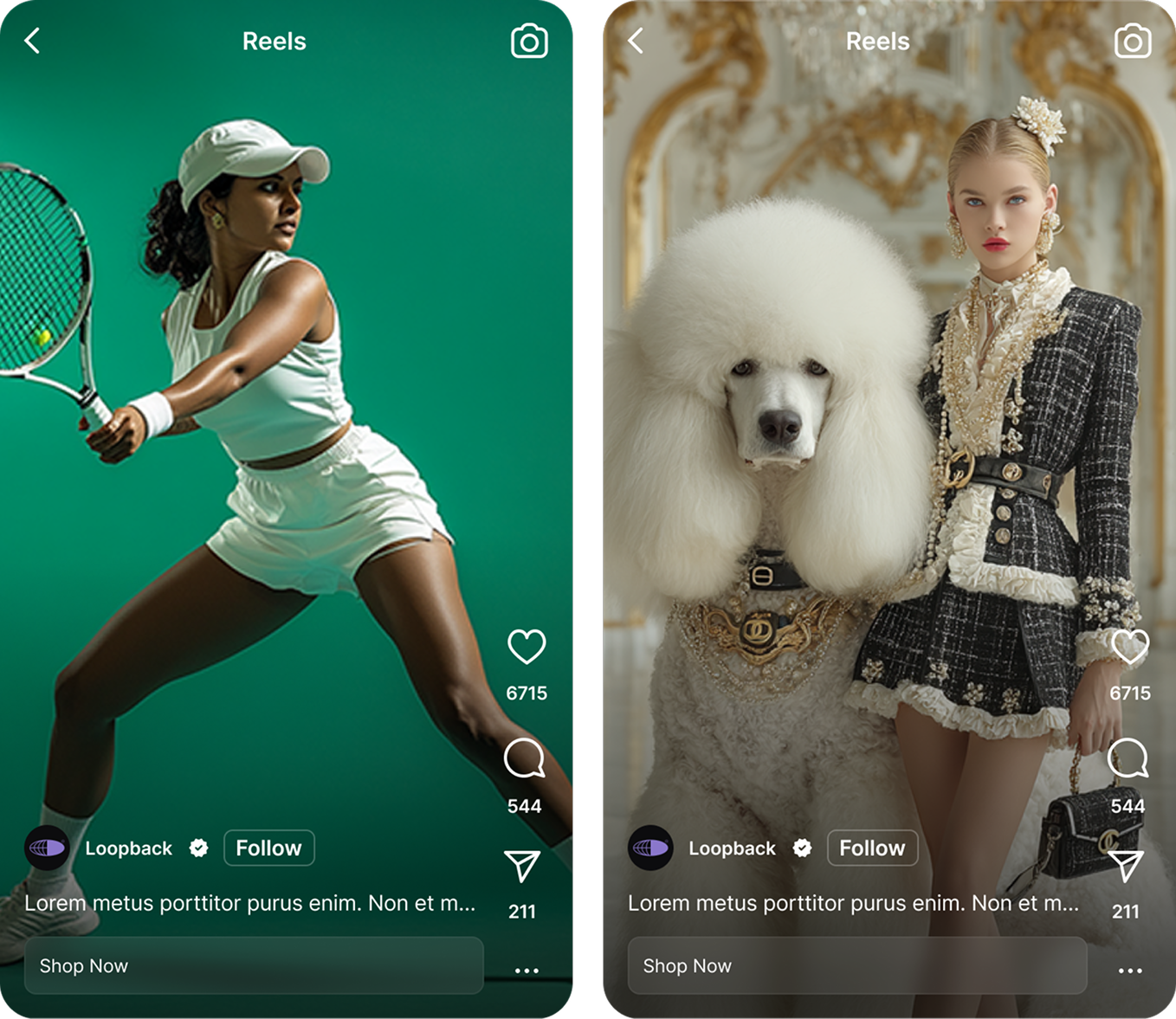The New Rules of Influencer Whitelisting and Partnership Ads in 2025

The Signal Shift: Data That Rewrites the Playbook
Creator-handle ads are the new performance baseline: by 2025 brands that start paid campaigns with creator identity routinely see faster buy-in and higher response than brand-only spots [1] Whitelisted creator ads now deliver meaningfully higher CTRs and conversion velocity, and platform-native formats preserve creator authenticity while enabling paid precision [2] They also cut CAC in many tests and make initial launches faster than scheduling brand shoots [3] Finally, the trust dividend from creators remains large: influencer recommendations still drive a major share of purchase decisions, which is why whitelisting is now treated as a persistent channel rather than a one-off tactic [4].
Decoding the Terms and Platforms: From “Whitelisting” to Partnership Ads
Terminology tightened up in 2025 so teams can move fast and avoid ambiguity: whitelisting (allowlisting) is permission to run ads from a creator's handle; content licensing grants use of an asset under your handle; dark boosts are ad-only promotions that may never appear on the creator's feed. Platform feature sets differ but the operational checklist is consistent.
Platform checklists
Meta (Facebook & Instagram) — use the Branded Content/Partnership Ads workflow, verify Business Manager IDs and asset access, set creator spend caps, and map placements (Reels, Stories, Feed, Advantage+ Shopping). Ensure paid-partnership tags and disclosure SLAs are in every agreement.
TikTok — collect Spark Ads codes or post authorization, confirm whether ads run from the creator's handle or the brand, lock music rights, and design hooks for the first two seconds. Test in-feed, TopView and search placements.
Pinterest — apply paid partnership tags and use Creator Collaboration tools for Idea Pins and video; align creative with intent-rich keywords and boards for discoverability.
Data flows and rights (short checklist)
- Define pixel usage and event deduplication rules in the contract.
- Specify ad-level metrics access and reporting cadence.
- Set audience-building permissions — can the brand create lookalikes from creator-handle engagement?
Performance With Protection: Guardrails for Brand Risk
Partnership Ads lift both lower-funnel efficiency and upper-funnel metrics, but scale increases exposure. The answer is structured governance: thorough vetting, layered compliance, and a rapid takedown path in contracts. For example, brands that layered governance into Partnership Ad programs preserved recall gains while neutralizing adjacency riskPierre Fabre case study showed meaningful ad-recall lifts when controls were baked in.
Pierre Fabre case study
 Learn more
Learn more
Why it works — and where it breaks
Creator identity delivers social proof, better comments, and higher view-through rates; failure modes are predictable: creator misalignment, policy non-compliance, saturation, and reputational crises. The guardrail program should be simple, executable, and rehearsed.
Non-negotiable guardrails
- Rigorous creator vetting (audience intent, adjacency, historical claims).
- Clear disclosure requirements and automated checks for FTC/ASA compliance.
- A comment moderation playbook and rapid-response takedown workflow tied to the ad permission ID.
- Pre-approved claims and evidence files for regulated categories — no guesswork in the ad creative stage.
Contracts, Licensing, and Audit: The 2025 Governance Framework
As Partnership Ads scale, contracts move from handshake to system. Three governance pillars work together: media-buy leverage, time-bound licensing economics, and audit-grade verification. Each contract should be auditable, revocable, and granular about rights.
Core contract clauses
- Scope of rights: handle usage, platforms, placements, geo constraints, and permitted derivatives (edits, subtitles, cuts).
- Time windows: 30–90 day default windows with explicit uplift fees for extensions.
- Exclusivity & conflict clauses by category/region to protect media leverage.
- Data rights: ad metric access, pixel use, and whether the brand may build audiences from creator engagement.
- Approval SLAs, takedown rights, and crisis clauses tied to specific consent IDs/codes.
Verification & audit
Capture explicit, revocable permissions (consent IDs), log every creative edit and targeting change, and run quarterly audits for disclosure, performance, and adjacency. Audit-readiness reduces legal friction and speeds emergency pauses.
Pricing, Budgeting, and the New Economics
Creator-based paid media introduces new line items: access fees for ad permissions, asset-licensing adders, exclusivity premiums, and performance bonuses. Build your negotiations on clear benchmarks and a tiered test-and-scale budget framework: start lean, find winners, then scale quickly with pre-agreed scale gates.
Benchmark patterns
- Access fees: chargeable per handle and per time window; clarify renewals and uplift.
- Asset licensing: price per asset, per edit, and per platform/geo.
- Performance bonuses and renewal discounts to align incentives to ROAS and CPA targets.
Budgeting for scale
A simple test budget is 70/20/10 across creators, angles, and formats. Define scale gates (ROAS, CPA thresholds, and fatigue triggers) so media teams can programmatically move spend. Measurement must be rigorous: use holdouts, geo tests, and clean-room analysis to validate incremental impact before adding long-term licensing fees.
Real-world proof: when brands disciplined their scale gates and testing, acquisition costs dropped materially; one example of Partnership Ads driving CAC compression is documented inOutfittery case study where Partnership Ads were a direct lever for a much lower CPA after disciplined testing and scaled rollout.
Outfittery case study
 Learn more
Learn more
Creative + Media Playbooks That Compound
Creative systems and media must be designed together. The simplest repeatable structure is modular storytelling: hook (first 2s), proof (demo/testimonial/UGC), and CTA — then iterate across creators and formats. Always test message × creator × format with a disciplined freshness cadence.
Testing matrix (always-on)
- First-frame and CTA split-tests; 15s vs 30s comparisons; native vs platform-cut variations.
- Comment mining to inform next creative wave and to detect emergent claims or compliance flags.
- Rotate top performers before fatigue and archive underperformers to preserve frequency budgets.
Platform recipes
Meta: Partnership Ads plus Advantage+ Shopping, test 3–5 creators/angles and scale winners fast. TikTok: Spark Ads authorization with native hooks and prioritized sounds. Pinterest: combine intent keywords with creator-led Idea Pins for seasonal lift.
Example of compounding creative + media: creator-identity ads used with strict testing and iterative creative refreshes enabled a brand-level ROAS uplift in a documented case where creator identity plus rigorous testing produced outsized returns — seeVeloretti case study for a practical illustration of disciplined creative systems driving high ROAS.
Veloretti case study
 Learn more
Learn more
From Pilot to Program: A 90-Day Roadmap, Checklist, and FAQ
A practical 90-day roadmap converts pilots into repeatable programs. Phase 1 is discovery and permissions; Phase 2 launches Partnership/Creator Ads with holdouts and weekly iteration; Phase 3 scales winners and formalizes governance and procurement cadences.
30/60/90-day milestones
- 0–30 days: build a creator bench, draft licensing templates, secure platform permissions, and instrument pixels and event deduplication.
- 31–60 days: launch Partnership Ads, run incrementality holdouts, iterate creatives weekly and monitor disclosure compliance.
- 61–90 days: scale statistically validated winners, refresh creative on a 2–4 week cadence, and set quarterly audits for safety and compliance.
Operational checklist
- Permissions verified on all platforms; disclosure templates finalized.
- Pixel and event deduplication done; audiences enabled and tested.
- Contracts logged with dates, geos, exclusivity rules, and renewal triggers; audit log active.
- Crisis/takedown protocol rehearsed and comment moderation assigned.
FAQ (quick answers)
- Do we need the creator’s password? No — platforms provide permissioning tools (Partnership Ads, Spark Ads).
- Can we edit creator content? Only if the license explicitly permits edits; spell out allowed derivatives and approval SLAs in the contract.
- Who owns the data? Specify metric access, pixel use, and audience rights — do not assume ownership without contract terms.
- How long can we run the ads? Within the licensed window; pre-agree renewal fees and extensions to avoid disputes.
- What if a crisis hits? Use takedown clauses, pause rights, and pre-approved response protocols to retire or edit ads quickly.
If you want pragmatic help turning Partnership Ads and whitelisting into a scaled, audited channel, start with a 90-day pilot that embeds contracts, measurement, and a creative system — then scale the winners. Ready to move from pilot to program?
Get started with The Cirqle today.
Give your team the power and speed they need to find the right partners and grow your brand.
%201.avif)






